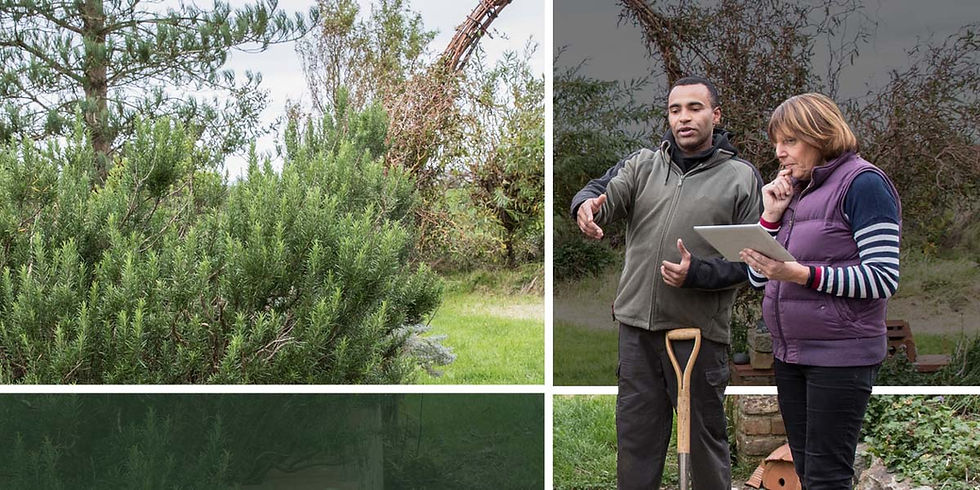Mulching around trees: Tips from the pros
- Rooted in Nature

- May 3, 2022
- 3 min read
Updated: Apr 30, 2024
Mulching your trees and landscape is important for a few reasons. In our climate, the most important of those reasons is conserving water, as well as helping to reduce temperature and moisture stress on your trees and landscape plants.

BENEFITS OF MULCH
Temperature regulation around plant root zone: mulch keeps soils cooler in the summer and warmer in the winter.
Mulch acts as a weed suppressant by inhibiting seed germination.
Once mulch breaks down over time, it adds beneficial nutrients back into the soil.
Mulch helps to give a finished and tidy look to your landscape.
When used around the base of trees, mulch can reduce damage from weed eaters and mowers.
Water conservation- mulch helps retain much needed moisture in the soil during summer heat.
TYPES OF MULCH
Now that you know the benefits of mulch, what type should you choose? There are many types of mulch on the market, but not all of them are good for your trees and landscape. Inorganic mulches such as pulverized rubber, lava rock and stone are not our favorites. They do not decompose or add nutrients back into the soil, and don’t have a good impact on the environment. However, in some cases where you need to repel excess moisture around dry climate plants, stone and decomposed granite can be a good landscaping option.
In most landscape beds and around trees, we prefer using organic mulches such as hardwood, softwood, pecan shells and pine needles. These natural mulches allow for better water conservation and provide the bonus benefit of adding nutrients back into the soil.
HOW MUCH MULCH
In an ideal world, trees would prefer mulch underneath the entire leaf canopy, like what exists in natural forest environments. Urban environments, however, typically include lawns and planting beds under the tree canopy. It’s best to remove lawn grasses from around the base of tree trunks, to a distance of at least three feet, or up to ten feet. The amount of turf you remove depends on the size of your tree. The bigger the tree, the farther away lawn grasses should be from the base of the trunk.
Apply mulch in a 1- to 2-inch deep layer of mulch to the soil surface under your tree canopy, making sure to keep mulch away from the base of the trunk and root flares. It is important to keep both the tree trunk and root flares exposed.
NO MULCH VOLCANOES!
The most common mistake made when mulching around trees is to pile up too much mulch right around the base of the trunk. We refer to these mounds as “mulch volcanoes.” They can actually kill your trees! When you allow excess moisture, trapped by the mulch, to build up around the base of the tree, you limit oxygen to the tree roots. The constant wetness will eventually cause root and trunk rot, which also allows in pests and other diseases.
WHEN TO MULCH
We do recommend refreshing mulch around your trees in both the spring and early fall – as long as the original mulch has begun to break down, and you won’t be creating too thick of a pile by adding new mulch. If you still have a 1- to 2-inch layer of mulch in place, there’s no need to add more.
Mulching is one of the easiest ways to conserve landscape water, especially when Maryland hits those summer dry spells. If you think your trees have been improperly mulched, or might have suffered damage as a result contact us 443-846-0199 or info@rootedinnaturemd.com - we can help you make (and install) good mulching choices.



Comments